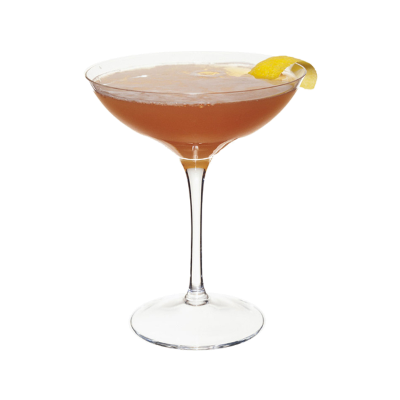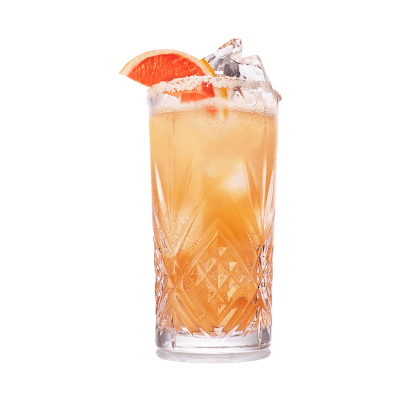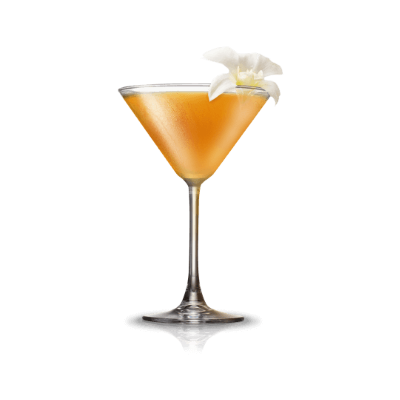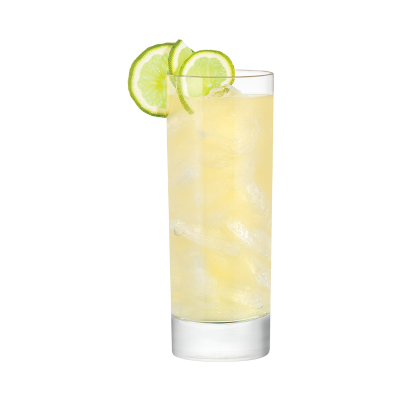Gin
Gin today is produced in different ways from herbal ingredients, giving rise to several distinct styles and brands. After juniper, gin tends to be flavored with botanical/herbal, spice, floral, or fruit flavors or often a combination. It is consumed mixed with tonic water in a gin and tonic. Gin is also often used as a base spirit to produce flavored, gin-based liqueurs, for example, sloe gin, traditionally made by the addition of fruit, flavorings, and sugar.
The name gin is an abbreviated form of the older English word genever, related to the French word genièvre and the Dutch word jenever. All ultimately derive from Juniperus, the Latin for juniper.
Gin is also great with
Blackthorn
The Blackthorn is a sloe gin-based cocktail that emerged in the early 20th century. The blackthorn is the name for Prunus spinosa, the plant whose fruit is called sloes. Those fruits are infused in gin to create sloe gin, from where the cocktail name. The name Blackthorn was assigned to many cocktails, all of which are using sloe gin as their base. The cocktail is tasty and intriguing, with sweet, savory, and spicy hints of cloves and cinnamon.
Salty dog
A salty dog is a cocktail made with gin or vodka, and grapefruit juice and is usually served in a highball glass with a salted rim. The salt is the only distinction between a salty dog and a greyhound. It is believed to date back to the 1920s. The Salty Dog was probably created in the 1950s, possibly by a gentleman named George Jessel, as a way to dial down the grapefruit’s tart and bitter notes.
Bijou
A bijou is a mixed cocktail composed of gin, vermouth, and chartreuse. This beverage invented by Harry Johnson is called bijou because it combined the colors of three jewels: gin for diamond, vermouth for ruby, and chartreuse for emerald. The bijou was widespread for several decades however, it disappeared after Prohibition.
Martinez
The Martinez is a classic cocktail that is widely regarded as the direct precursor to the Martini. It serves as the basis for many modern cocktails, and several different versions of the original exist. The true origin of the Martinez cocktail is unclear. Two early stories attribute the making of a cocktail named the Martinez to bartender Jerry Thomas at the Occidental Hotel.
Paradise
The combination of gin and apricot brandy was quite common in the early days of the cocktail. It's a pleasant taste because the brandy adds a sweet fruit contrast against the gin's botanical flavoring and drier profile. The orange juice complements both of those, bridging the gap and adding a bright citrus touch that is very enjoyable. The earliest known in-print recipe for the Paradise Cocktail was written by Harry Craddock in 1930.
Bees Knees
The Bee's Knees is a rejuvenating Prohibition-era cocktail, pleasant on spring and summer afternoons. It is a simple mixture of gin, lemon juice, and honey syrup, and the recipe is easy to make at home. Frank Meier, an Austrian-born bartender, is the author of this cocktail at the Hotel Ritz Paris in the 1920s. Changing from sugar to honey creates a slightly richer variant of the gin sour. The replacement was made because honey is better to mask the unpleasant taste and aroma of the gin. The honey comes in the way of homemade honey syrup, a simple combination of honey and water that adds complexity and sweetness. The lemon juice complements that sweetness with fresh and tart acidity and it brings the cocktail into balance. A Bees Knees is a Prohibition Era cocktail made with gin, fresh lemon juice, and honey. It is served shaken and chilled, often with a lemon twist. The name comes from prohibition-era slang meaning "the best". The unique name is a convention of the time: The phrase "bee's knees" was popular slang used to call something excellent or outstanding. With today's variety of gins, the bee's knees is a cocktail with many options.
20th Century
The 20th Century is a gin cocktail invented in 1937 by C.A. Tuck. The drink is named after the 20th Century Limited express train which ran between New York City and Chicago from 1902 until 1967. The ingredients may seem strange, but the gin’s dry nature and botanical flavor profile pair perfectly with Lillet blanc, a light aromatized wine. This recipe is very similar with the Corpse Reviver cocktail recipe with crème de cacao stepping in for the orange liqueur.
Rickey
The rickey is a classic highball cocktail made with gin or bourbon, lime juice, and carbonated water. It was invented in Washington D.C. at Shoomaker's bar by bartender George A. Williamson and named after the Democratic lobbyist Colonel Joe Rickey. Its popularity grew when made with gin instead of bourbon a decade later. The cocktail is clean, sharp, and refreshing and is always served in a highball glass. Optionally lime wheels are used as a garnish and can be added sugar.







